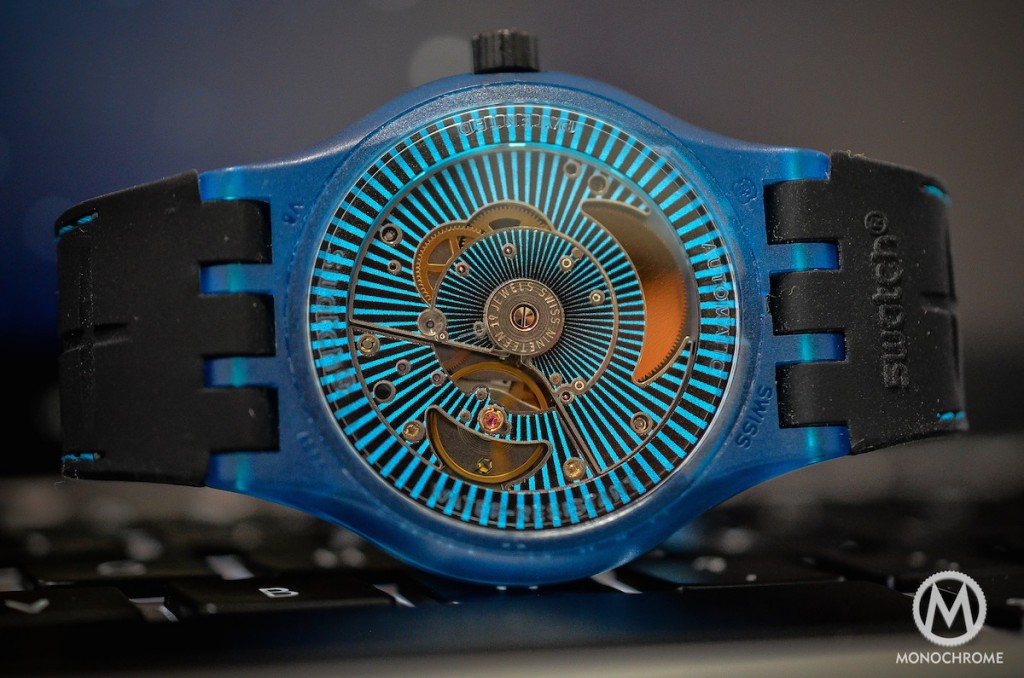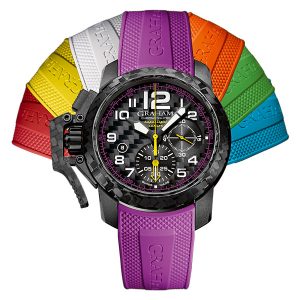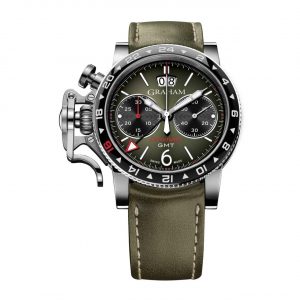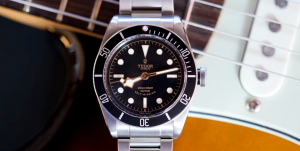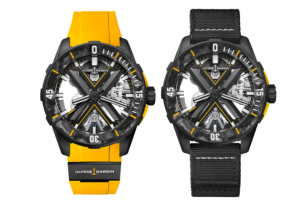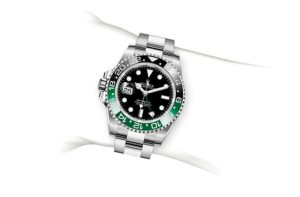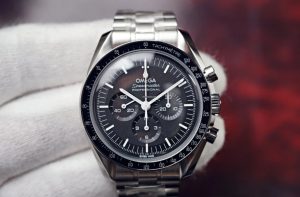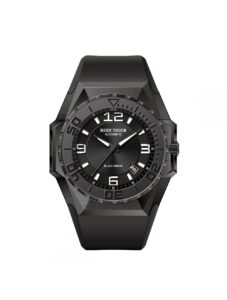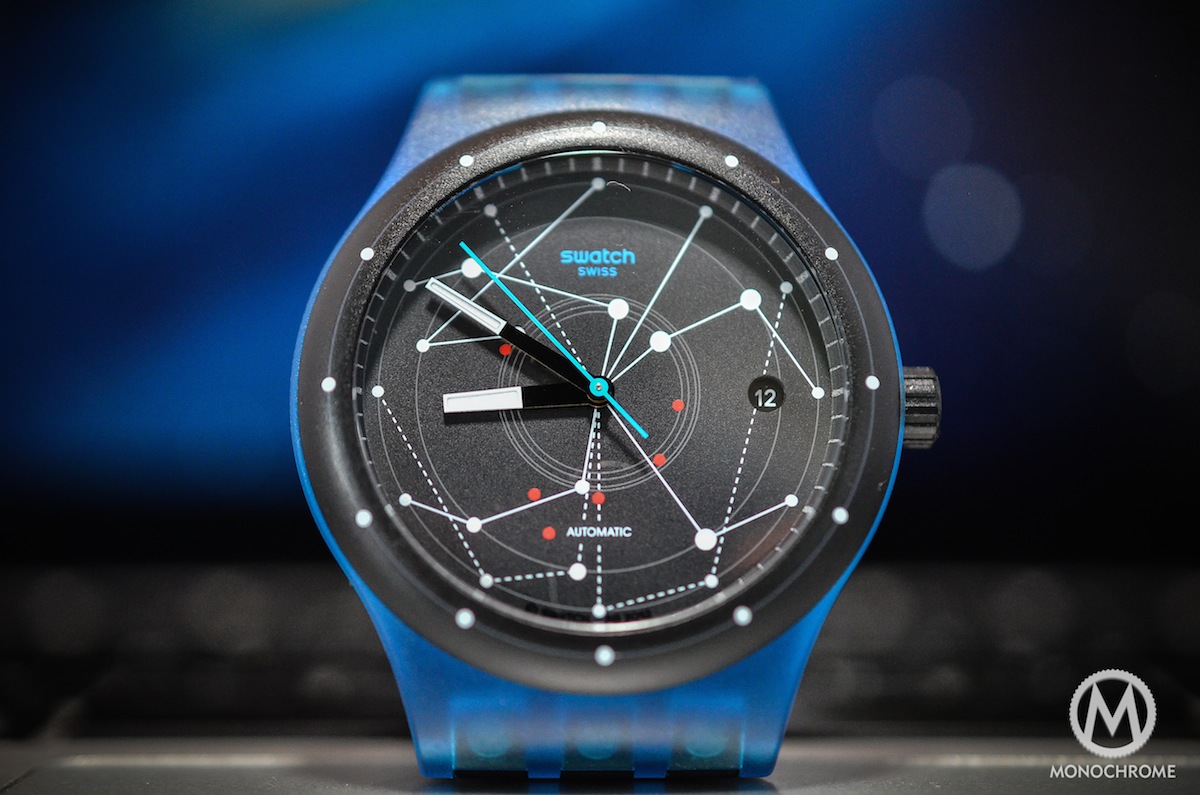
Like the first Swatch watch in 1983, this new automatic watch is a major industrial milestone that could (emphasis on “could” because, for the moment, we are not sure of possible future developments) change the face of the Swatch Group and indeed the whole watch industry.
A History of Swatch
Swatch (which stands for “second watch,” because of its affordable price and casual look) was born in the early 1980s, right in the middle of the so-called quartz crisis. At that time, the watchmaking industry in Switzerland was intensely affected by the arrival of cheap Japanese quartz watches and production numbers became lower than at any time before. However, a very simple but clever idea saved the Swiss watch industry. In fact, we can trace the rise of haute horlogerie, luxury watches and independent watchmaking directly to the simple, cheap quartz Swatch watch that made its debut in 1983.
Swatch was born under the leadership of Ernst Thomke, CEO of the movement maker ETA, who was aided by a small team of engineers. Using the concept of the Concord Delirium (the thinnest watch in the world), Thomke designed a watch with a caseback used as the main plate of the movement. The Swatch was devised as a Swiss-made plastic watch with a fully integrated and in-house-built movement. Compared to mechanical watches, a Swatch was 80% cheaper to produce due to fully automating its assembly and reducing the number of parts to only 51 components.
The first collection was introduced in March 1983 at an initial price range comparable to those of Seiko and Citizen’s watch collections, but it was the first such watch developed and manufactured in Switzerland. Helped by an aggressive marketing campaign, sales were huge, and overcame the targets of one million pieces for 1983 and 2.5 million the next year. Nicolas G. Hayek, with a group of Swiss investors, bought Swatch in 1985 and used it as the foundation of what is now known as the Swatch Group.
Because of the Swatch watch’s success, the whole Swiss industry took advantage of its creation. The renewal of many brands, and the birth of our favorite independent watchmakers, are partially due to the Swatch. It may be a simple and cheap plastic timepiece but it proved to be a historically important one.
Overall appearance:
The Swatch Sistem51 brings back the idea of the 1983 Swatch with one single difference, its movement. You’ll find the same basic concept of a plastic watch, Swiss-made, developed in-house, with a 51-part movement fully industrialized and for a very low price (about $15o in the U.S.). Everything that characterized the original Swatch watch is here, except for its automatic mechanical movement. It is not the first automatic Swatch — some of them used to come with ETA movements — but this one adds something more.
When it was presented at Baselworld 2013, the Swatch Sistem51 created a real earthquake in the watchmaking industry, a mixed feeling of astonishment and fear. How was it possible that a Swiss-made watch with a manufacture movement (and not the worst one we’ve ever seen, either) could be sold for a fraction of the price of an ETA-powered Tissot? It was accomplished by using synergies inside the Swatch Group and applying the same magic trick that the 1983 Swatch used. Under its fun and inexpensive exterior, the Sistem51 is a real industrial achievement and shows an amazing intelligence in its conception. In order to keep a low retail price, the movement is fully made by machine, without any human intervention, even to adjust the accuracy of the balance wheel and the escapement.
Movement:
The movement of the Swatch Sistem51 is a real engineering feat, albeit far from what passionate watchmakers are used to producing and not at all the “traditional” way to develop a movement. It may be cheap, but it is a really interesting engine that boasts more technology than any other ETA, Soprod or Sellita. To build this movement, ETA, Swatch R&D, Nivarox and Comadur (all part of the Swatch Group) joined forces working over a period of two years to create, from scratch, a highly complex manufacturing process that led to an incredibly simple movement.
The genius of the Sistem51 is that it’s made of only 51 parts, spread around five modules and linked to one another by only one central screw. The assembling of the parts, including the 19 jewels and the regulating organ, is done by machine and uses only solders. The balance wheel’s assembly and adjustment are usually the most sensitive tasks when manufacturing a movement. It requires the skills of trained watchmakers to achieve a good chronometric rate. In the Sistem51, it is adjusted by a laser that removes enough material to find that perfect balance, and therefore the perfect accuracy. And as the balance wheel and the escapement are made of a synthetic and anti-magnetic material, there is essentially no reason for them to deregulate.
The movement boasts 90 hours of power reserve, an impressive achievement compared to the 42 hours of an ETA or a Soprod. A bidirectional transparent rotor (which will never hide the view of the technical elements, as the counterweight is located around the rotor) winds the single barrel. Once again, such a detail is usually only found in fine, expensive watches. Last but not least, Swatch states it has an accuracy of +/- 7 seconds per a day, a rate that is actually very close to COSC chronometer requirements (-4/+6 seconds per a day).
The main question that remains about the Swatch Sistem51 is about its reliability. Far be it from us to worry that the movement won’t be solid or accurate, but what if a problem should arise? The balance wheel and escapement mechanism cannot be adjusted. Worst of all, the caseback cannot be removed. We are guessing that people will do the same as they did when they ran into problems with the quartz Swatch: considering the price, simply replace it! It would be more expensive to repair it anyway. That’s clearly something we are not used to, especially because we love vintage watches and restoring our old beauties. But it may be the future.
Features:
The Sistem51 comes with the attributes of much more expensive timepieces. It has an impressive accuracy and power reserve, but also a quick date (which will change directly at midnight and which you can adjust via the second position of the crown, without changing the time) and a hacking second mechanism (the second hand stops when pulling the crown, to finely adjust time). The last feature, which may sound unimportant, is that it can be wound by the crown. Just remember that some old and very cheap Seiko watches didn’t have such a device.
In its appearance, the Sistem51 is a simple three-hand watch with date, but a more complicated one by virtue of its movement and features. It has everything an ETA-powered watch has and even more, but for a fraction of the price.
Design and daily wearing:
The Swatch Sistem51 is visually a Swatch, no doubt about it. The translucent case is, in every aspect, similar to a quartz Swatch, but even though made of plastic, it looks quite solid and well finished with a fine-grained texture. It’s available in four versions: blue case with a black dial, red case with a black dial, a full black edition and a full white edition. The entire collection comes with a celestial pattern on the dial. The red dots represent six of the jewels and the white dots the weld points of the movement.
Conclusion:
The Swatch Sistem51 is inexpensive, it has a plastic case, and it doesn’t offer any fancy complications. It is not what we would normally call haute horlogerie. It is, however, an important watch that may herald the future of mainstream watches. It is an astonishing industrial achievement, the first mechanical watch built without any human hands. Moreover, it ushers in more innovations, technology and content than any other inexpensive mechanical watch. It is clearly the new trand-setter for the entire watchmaking industry. Most impressive of all, did we mention it costs only $150? Only the Swatch Group would be able to achieve all this. You may love it or hate it, but no one can deny the great progress it represents.
